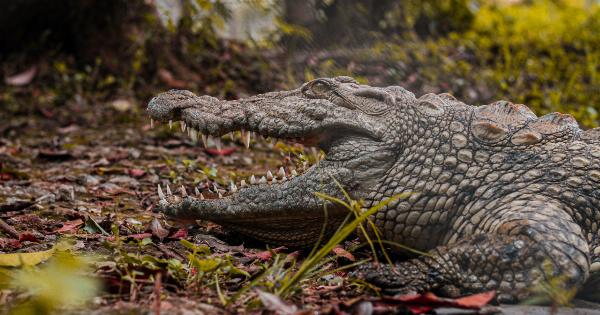Bravery is often considered a hallmark of strong character. It requires individuals to be courageous in the face of danger or adversity, and to take bold risks in pursuit of their goals.
But what are the neural mechanisms that underlie bravery? In this article, we will explore the latest scientific research and theories on the neural underpinnings of bravery.
The Role of the Amygdala in Fear and Bravery
The amygdala is a small almond-shaped structure deep in the brain that is considered to be the center of emotions, including fear.
It is responsible for processing information about potential threats and triggering the physiological response that prepares the body for fight or flight.
While the amygdala is typically associated with fear, recent studies suggest that it may also play an important role in the neural mechanisms of bravery.
In a 2013 study published in Nature Neuroscience, researchers found that mice with artificially activated amygdalae displayed increased aggression and risk-taking behavior.
These findings suggest that the amygdala may be responsible for assessing the potential risks and benefits of a situation, and activating the courage necessary to take bold action.
However, it is important to note that this research was conducted in animal models and further studies are needed to fully understand the role of the amygdala in human bravery.
The Prefrontal Cortex and Executive Function
The prefrontal cortex is the part of the brain responsible for high-level cognitive functions such as decision-making, problem-solving, and planning. It is also involved in regulating emotions and controlling impulsive behavior.
Recent research suggests that the prefrontal cortex may play an important role in the neural mechanisms of bravery.
In a 2017 study published in Neuron, researchers found that activation in the prefrontal cortex was associated with increased willingness to take risks in a gambling task.
These findings suggest that the prefrontal cortex may be responsible for generating a conscious evaluation of potential risks and benefits, and for using this information to regulate behavior in a goal-directed manner.
This executive function may be critical for individuals who demonstrate bravery in the face of danger or adversity.
The Role of Social and Cultural Factors
While neural mechanisms play an important role in generating the courage necessary for bravery, social and cultural factors also play a significant role.
Social support from friends, family, and community can provide individuals with the confidence and support they need to take bold action.
Cultural values also play an important role in shaping perceptions of bravery. For example, in some cultures, bravery may be associated with military service or fighting for one’s country.
In other cultures, bravery may be associated with standing up for one’s beliefs, even in the face of persecution or discrimination.
In addition, cultural stereotypes can also shape perceptions of bravery. For example, men may be more likely to be viewed as brave than women, particularly when it comes to physical bravery such as engaging in combat or extreme sports.
The Role of Trauma and Resilience
Individuals who have experienced trauma may also demonstrate bravery in their ability to overcome adversity and build resilience. Trauma can come in many forms, including physical or emotional abuse, natural disasters, or combat exposure.
Despite the negative impact of trauma, some individuals are able to develop resilience and demonstrate bravery in the face of ongoing adversity.
Research suggests that resilience is a complex process that involves a range of factors, including social support, cognitive flexibility, and coping strategies.
Some individuals who have experienced trauma may develop a heightened sense of danger and a constant state of vigilance.
While this can be a challenging experience, it may also provide individuals with the courage to take bold action in the face of adversity.
The Role of Neuroplasticity in Developing Bravery
Neuroplasticity refers to the brain’s ability to reorganize itself in response to new experiences. This process allows individuals to develop new skills and abilities, and to recover from injury or damage to the brain.
Research suggests that individuals can develop bravery through repeated exposure to fear-inducing situations. Over time, the brain can adapt and become more resilient to these experiences, leading to increased courage and risk-taking behavior.
This process can be seen in individuals who have overcome phobias or anxiety disorders through exposure therapy.
By gradually exposing themselves to feared situations in a controlled and supportive environment, individuals can build the courage necessary to face their fears and overcome them.
The Importance of Understanding the Neural Underpinnings of Bravery
By understanding the neural mechanisms that underlie bravery, we can gain insight into the complex processes that allow individuals to overcome fear and adversity.
This knowledge can be used to develop new therapeutic approaches for individuals struggling with anxiety, post-traumatic stress disorder, or other related disorders.
In addition, this knowledge can also be used to develop interventions that promote resilience and bravery in individuals who have experienced trauma, or who have other challenges in their lives.
By understanding the complex interplay between neural mechanisms, social and cultural factors, and personal experiences, we can develop a more nuanced understanding of what it means to be brave.
Conclusion
The neural mechanisms of bravery are complex and multifaceted, involving a range of brain structures, social and cultural factors, and personal experiences.
By understanding the neural underpinnings of bravery, we can gain insight into the complex processes that allow individuals to overcome fear and adversity.
Further research is needed to fully understand the role of the amygdala, prefrontal cortex, and other brain structures in generating the courage necessary for bravery.
However, by continuing to explore these processes, we can develop new strategies for promoting resilience and bravery in individuals facing a range of challenges.
























